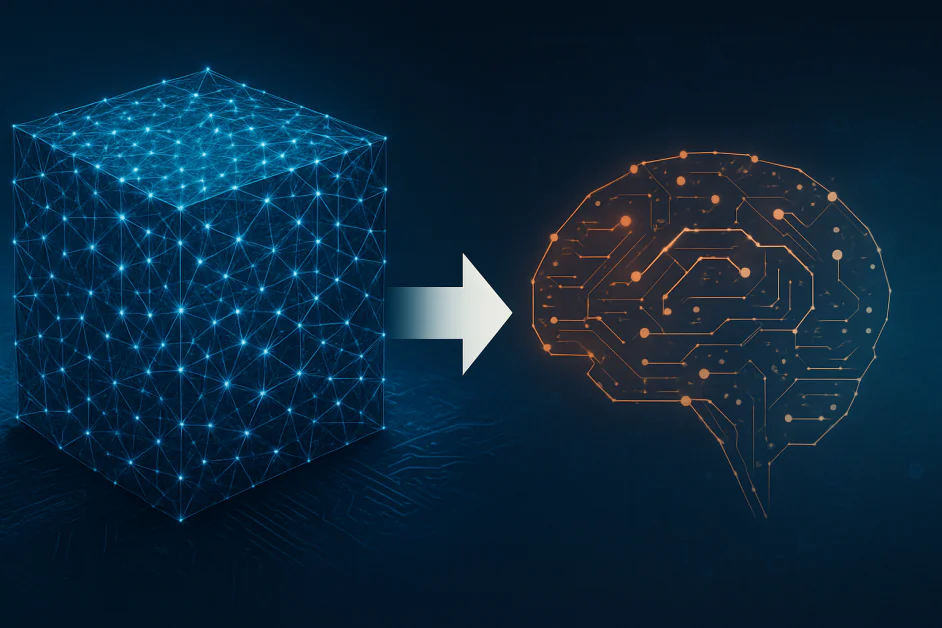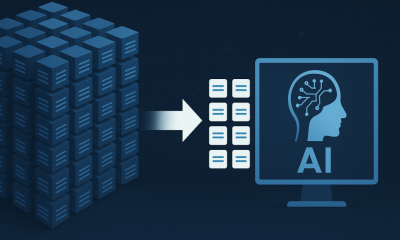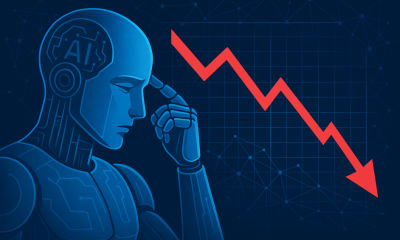Artificial Intelligence
The End of the Scaling Era: Why Algorithmic Breakthroughs Matter More Than Model Size

For much of the past decade, progress in artificial intelligence has been driven by scale. Bigger datasets, more parameters, and greater computing power became the formula for success. Teams competed to create bigger models, measuring progress in trillions of parameters and petabytes of training data. We call this the scaling era. It has fueled much of the AI progress we see today, but we are now approaching a limit where simply making models larger is no longer the most efficient, smart, or sustainable approach. As a result, the focus is shifting from raw scale to breakthroughs in algorithms. In this article, we examine why scaling by itself falls short and how the next phase of AI development will rely on algorithmic innovation.
The Law of Diminishing Returns in Model Scaling
The scaling era was built on sold empirical foundations. Researchers observed that increasing the size of models and datasets can lead to predictable gains in performance. This pattern became known as the scaling laws. These laws quickly became the playbook for leading AI labs, fueling the race to build ever-bigger systems. That race gave rise to large language models and foundational models that now power many of today’s AI. However, like every exponential curve, this AI scaling is beginning to flatten now. The expenses of developing even larger models are growing sharply. Training a state-of-the-art system now consumes as much energy as a small town, raising serious environmental concerns. The financial cost is so high that only a handful of organizations can compete. Meanwhile, we are observing clear signs of diminishing returns. Doubling the parameter count no longer doubles capability. The improvements are also incremental, refining only the existing knowledge rather than unlocking new abilities. The value gain for each additional dollar and watt spent is reducing. The scaling strategy is reaching its economic and technical limits.
The New Frontier: Algorithmic Efficiency
The limits of scaling laws have pushed researchers to refocus on algorithmic efficiency. Rather than relying on brute force, they have started focusing on designing smarter algorithms that use resources more effectively. Recent advances illustrate the power of this shift. For instance, Transformer architecture, driven by its attention mechanism, has dominated AI for years. But the attention comes with a weakness: its computational demands grow rapidly with sequence length. State Space Models (SSMs), such as Mamba, are emerging as a promising alternative to Transformer. By enabling more efficient selective reasoning, SSMs can match the performance of much larger Transformers while running faster and using significantly less memory.
Another example of algorithmic efficiency is the rise of Mixture of Experts (MoE) models. Instead of activating an entire massive network for every input, MoE systems route tasks to only the most relevant subset of smaller networks, or “experts.” The model may have billions of parameters in total, but each computation uses only a fraction of them. This is like having a vast library but only opening the few books you need to answer a question, rather than reading every book in the building each time. The result is the knowledge capacity of a giant model with the efficiency of a much smaller one.
Yet another example combining these ideas is DeepSeek-V3, a Mixture-of-Experts model enhanced with Multi-head Latent Attention (MLA). MLA improves traditional attention by compressing key-value states, allowing the model to handle long sequences efficiently, much like SSMs, while preserving the strengths of Transformers. With 236 billion parameters in total but only a fraction activated per task, DeepSeek-V3 delivers top-tier performance in areas like coding and reasoning, all while being more accessible and less resource-intensive than comparably large, scaled models.
These are not just isolated examples. They represent a broader trend towards smarter, more efficient design. Researchers are now focused on how to make models faster, smaller, and less hungry for data without sacrificing performance.
Why This Shift Matters
The move from relying on scale to focusing on algorithmic breakthroughs has significant effects on the AI field. First, it makes AI more accessible to everyone. Success no longer depends only on having the most powerful computers. A small group of researchers can create a new design that outperforms models built with far larger budgets. This changes innovation from a race over resources to one driven by ideas and expertise. As a result, universities, startups, and independent labs can now play a bigger role, beyond just the big tech companies.
Second, it helps make AI more useful in everyday settings. A model with 500 billion parameters might look impressive in studies, but its huge size makes it hard and costly to use in practice. In contrast, efficient options like Mamba or Mixture of Experts models can run on standard hardware, including devices at the edge of networks. This ease of use is key for bringing AI into common applications, such as diagnostic tools in healthcare or instant translation features on smartphones.
Third, it tackles the issue of sustainability. The energy demands of building and operating giant AI models are becoming a major challenge for the environment. By emphasizing efficiency, we can cut down sharply on the carbon emissions from AI work.
What Comes Next: The Era of Intelligence Design
We are entering what we might call the era of intelligence design. The question is no longer how big we can make the model, but how can we design a model that is inherently more intelligent and efficient.
This shift will bring innovations across several core areas of research. One of the areas where we can expect advances is in AI model architecture. The new models like the state space models already mentioned may change how neural networks process data. For instance, architecture inspired by dynamical systems is proving more powerful in experiments. Another focus will be on training methods that help models learn effectively with far less data. For instance, the advances in few-shot and zero-shot learning are making AI more data-efficient, while techniques like activation steering allow behavioral improvements without any retraining. The post-training refinements and the use of synthetic data are also reducing training needs dramatically, sometimes by factors of 10,000.
We’ll also see growing interest in hybrid models, such as neuro-symbolic AI. Neuro-symbolic AI is emerging as a major trend in 2025, combining neural learning’s pattern recognition with symbolic systems’ logical strengths for better explainability and less data reliance. Examples include AlphaGeometry 2 and AlphaProof, which allow Google DeepMind to secure gold medal performance at IMO 2025. The goal is to develop systems that don’t just predict the next word based on statistics but also understand and reason about the world in a human-like way.
The Bottom Line
The scaling era was essential and brought remarkable growth to AI. It expanded the limits of what was possible and delivered the foundational technologies we rely on today. But like any technology that matures, the initial strategy eventually exhausts its potential. The major breakthroughs ahead will not come from adding more layers to the stack. Instead, they will emerge from redesigning the stack itself.
The future belongs to those who innovate in algorithms, architecture, and the fundamental science of machine learning. It is a future where intelligence is measured not by the number of parameters, but by the elegance of the design. The drive to create smarter algorithms is just getting started. This transition opens the door to AI that’s more accessible, sustainable, and truly intelligent.












